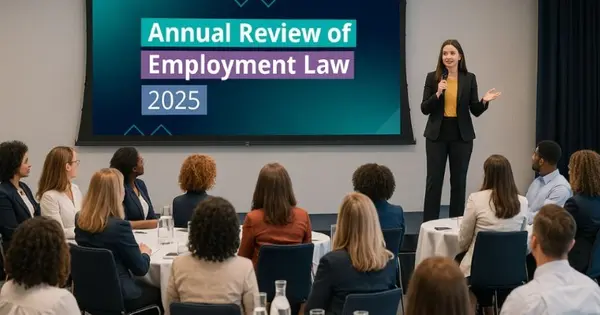Jason Elliott was called to the Bar of Northern Ireland in 2013 and is the Associate Head of School of Law at Ulster University. As a practising barrister, he has developed a largely civil practice representing individuals, companies and public bodies in litigation. This covers a wide range of areas including personal injuries, wills and employment law. In terms of employment law, he has represented both applicants and respondents in the Industrial Tribunal. At Ulster University, Jason lectures extensively on the civil areas of practise such as Equity and Trusts and delivers employment law lectures for both undergraduate and postgraduate students.
The claimant was the Managing Director of the Emerging Markets Desk for the respondent. Whilst working for the respondent, the claimant made a number of allegations relating to the trading practices including some that would be tantamount to ‘insider dealing’. From the respondent’s perspective, these were seen as continuous complaints and there were issues raised in relation to the claimant’s ability to generate business. As a result, the claimant was subsequently dismissed.
The claimant brought his claim citing that he had been automatically unfairly dismissed on the basis of protected disclosures. There were 37 alleged disclosures made, either written or orally, from April to November 2015. In terms of the nature of the disclosures, they were regarded as being ‘cryptic’ and that they largely arose as a result of telephone conversations where the claimant failed to provide particularities when asked. The Tribunal, at first instance, stated the motivation was not due to the issues raised but rather the commission payments the claimant stated he was due. They took each disclosure separately rather than dealing with them cumulatively. Furthermore, it was held that the claimant had become impossible to work with and so his case was dismissed.
On appeal to the EAT, they did outline that in accordance with Norbrook Laboratories v Shaw the communications could be taken together. However, they distinguished the cases, citing that the claimant was seeking to bring nearly 40 communications together for the purpose of three or four particular disclosures. Without clarity from the claimant, it was not possible for the court to make a determination as to which communication is linked to which disclosure.
On appeal to the Court of Appeal, the issue related to the extent the court should group the disclosures together rather than take them separately. It was held that it should be a matter of common sense as to whether to join them together rather than a complex question of law. The court stated that the question was academic anyway considering that the Tribunal had found that none of the 37 communications amounted to a protected disclosure, either alone or with reference to previous communications. Therefore, the appeal was dismissed.
Practical Lessons
The Court of Appeal has provided guidance that communications can be linked together when it would be ‘common sense’ to do so. It is a simple question of fact and will have to be considered in each case. When faced with separate communications, the employer should be mindful of the extent, if any, they are linked and how they may form a protected disclosure.
https://www.bailii.org/ew/cases/EWCA/Civ/2020/1601.html
Continue reading
We help hundreds of people like you understand how the latest changes in employment law impact your business.
Please log in to view the full article.
What you'll get:
- Help understand the ramifications of each important case from NI, GB and Europe
- Ensure your organisation's policies and procedures are fully compliant with NI law
- 24/7 access to all the content in the Legal Island Vault for research case law and HR issues
- Receive free preliminary advice on workplace issues from the employment team
Already a subscriber? Log in now or start a free trial



